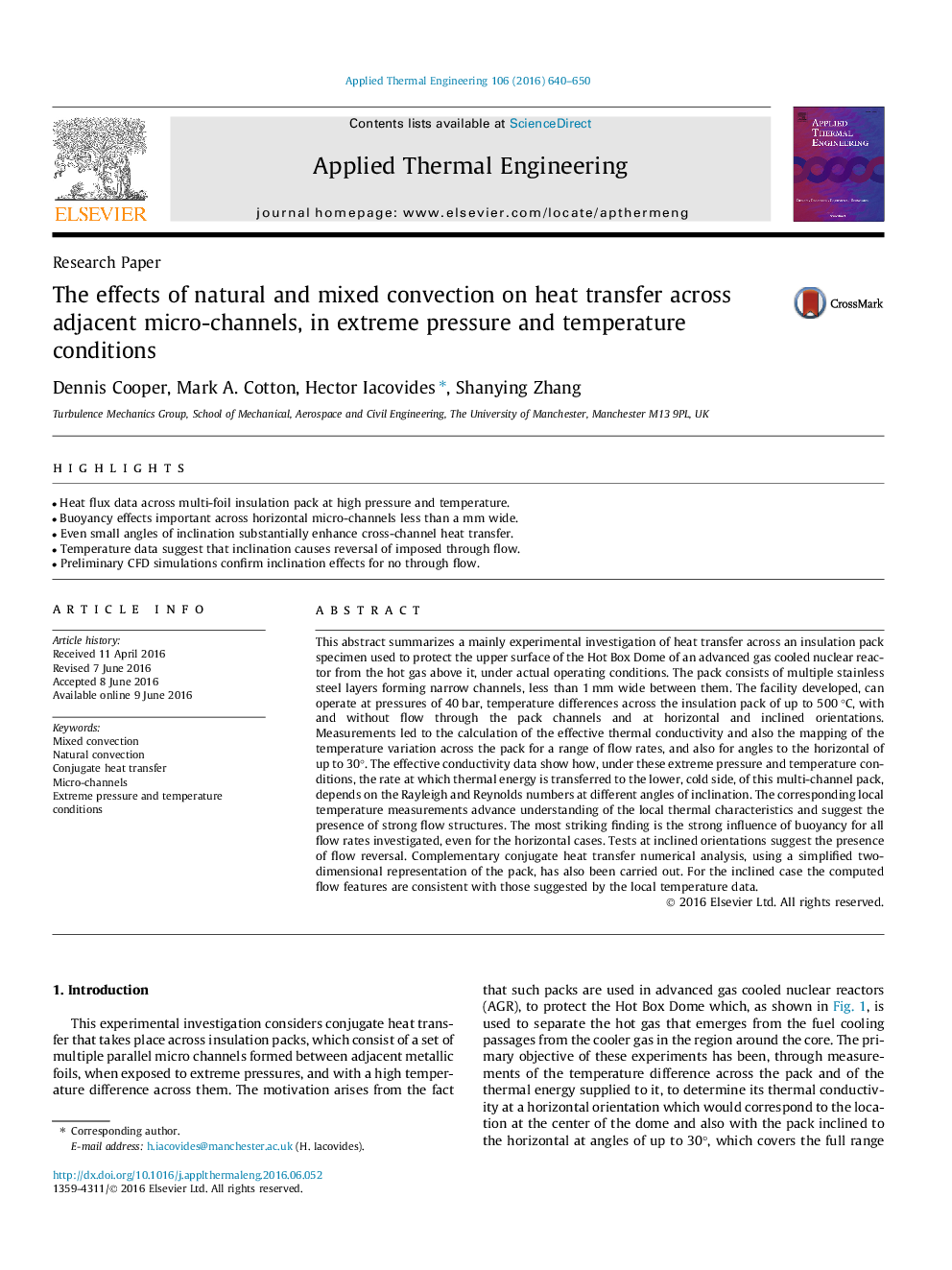| Article ID | Journal | Published Year | Pages | File Type |
|---|---|---|---|---|
| 7047460 | Applied Thermal Engineering | 2016 | 11 Pages |
Abstract
This abstract summarizes a mainly experimental investigation of heat transfer across an insulation pack specimen used to protect the upper surface of the Hot Box Dome of an advanced gas cooled nuclear reactor from the hot gas above it, under actual operating conditions. The pack consists of multiple stainless steel layers forming narrow channels, less than 1 mm wide between them. The facility developed, can operate at pressures of 40 bar, temperature differences across the insulation pack of up to 500 °C, with and without flow through the pack channels and at horizontal and inclined orientations. Measurements led to the calculation of the effective thermal conductivity and also the mapping of the temperature variation across the pack for a range of flow rates, and also for angles to the horizontal of up to 30°. The effective conductivity data show how, under these extreme pressure and temperature conditions, the rate at which thermal energy is transferred to the lower, cold side, of this multi-channel pack, depends on the Rayleigh and Reynolds numbers at different angles of inclination. The corresponding local temperature measurements advance understanding of the local thermal characteristics and suggest the presence of strong flow structures. The most striking finding is the strong influence of buoyancy for all flow rates investigated, even for the horizontal cases. Tests at inclined orientations suggest the presence of flow reversal. Complementary conjugate heat transfer numerical analysis, using a simplified two-dimensional representation of the pack, has also been carried out. For the inclined case the computed flow features are consistent with those suggested by the local temperature data.
Related Topics
Physical Sciences and Engineering
Chemical Engineering
Fluid Flow and Transfer Processes
Authors
Dennis Cooper, Mark A. Cotton, Hector Iacovides, Shanying Zhang,
